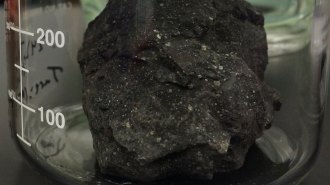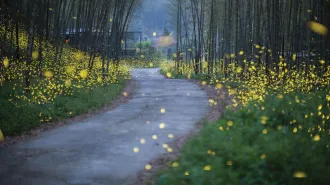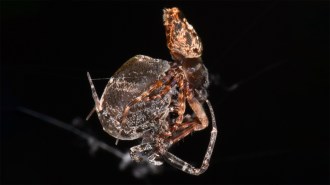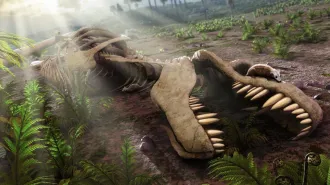Uncategorized
-
 Animals
AnimalsDog breed is a surprisingly poor predictor of individual behavior
Despite the popular conviction that dog breeds are associated with specific traits, breed accounts for only 9 percent of behavioral differences.
By Anna Gibbs -
 Neuroscience
NeuroscienceMom’s voice holds a special place in kids’ brains. That changes for teens
Unfamiliar voices hold special appeal for teens, a sign of a shift from a focus on mostly family to wider networks, brain scans suggest.
-
 Health & Medicine
Health & MedicineJoggers naturally pace themselves to conserve energy even on short runs
Data from fitness trackers and treadmill tests challenge ideas about what drives speed.
By Chris Gorski -
 Health & Medicine
Health & Medicine50 years ago, scientists were seeking the cause of psoriasis
In the 1970s, scientists found a link between a chemical messenger and psoriasis, a complex inflammatory skin disorder.
-
 Plants
PlantsLeonardo da Vinci’s rule for how trees branch was close, but wrong
An update to da Vinci’s elegant, 500-year-old “rule of trees” offers a powerful, new way to describe the structure of almost any leafy tree.
-
 Health & Medicine
Health & MedicineAntibiotics diminish babies’ immune response to key vaccines
With each round of antibiotics during a child’s first two years, antibody levels to four vaccines dropped further from what’s considered protective.
-
 Space
SpaceAll of the bases in DNA and RNA have now been found in meteorites
Scientists have detected adenine and guanine in meteorites for decades and seen hints of uracil. But cytosine and thymine had remained elusive.
By Liz Kruesi -
 Animals
AnimalsWhy you should care about ‘The Insect Crisis’
A new book explains why insect populations are dwindling and why that’s a problem.
-
 Tech
TechThis camera lens can focus up close and far away at the same time
Inspired by the eye of an extinct trilobite species, the large depth of field can help with imaging techniques to create 3-D photos.
By Anna Gibbs -
 Animals
AnimalsThese male spiders catapult away to avoid being cannibalized after sex
In a leap for survival, male Philoponella prominens spiders leverage hydraulic pressure to extend leg joints and fling themselves off hungry females.
-
 Life
Life‘The Last Days of the Dinosaurs’ tells a tale of destruction and recovery
A new book takes readers back in time to see how an asteroid strike and the dinosaur extinction shaped life on Earth.
By Sid Perkins -
 Physics
PhysicsGravitational waves gave a new black hole a high-speed ‘kick’
Ripples in spacetime revealed that two black holes united into one, which then sped off at around 5 million kilometers per hour.